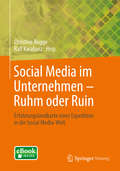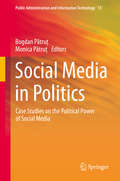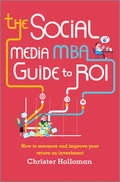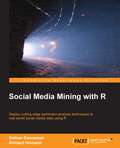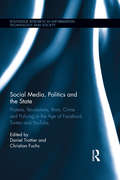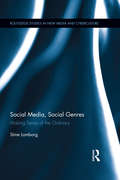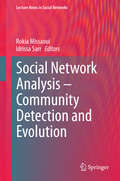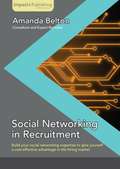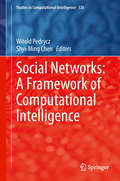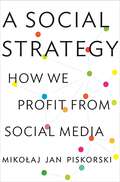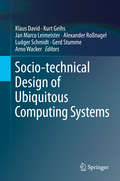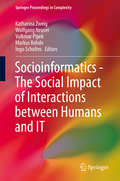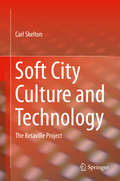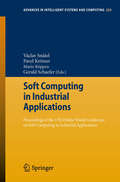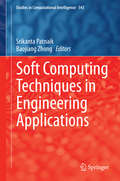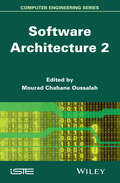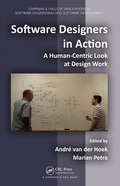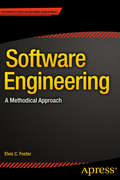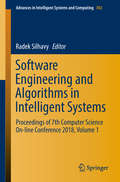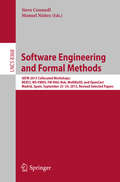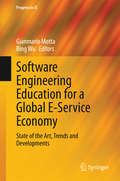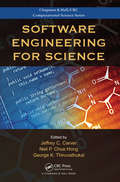- Table View
- List View
Social Media im Unternehmen – Ruhm oder Ruin: Erfahrungslandkarte einer Expedition in die Social Media-Welt
by Christine Rogge and Ralf KarabaszDer Grundsatz „Wissen ist Macht“, auf den sich Generationen von Führungskräften noch stützen konnten, ist spätestens mit dem Durchbruch der sozialen Medien passé. Informationen verbreiten sich heute im Unternehmen in Windeseile und auf immer neuen Wegen. Auch haben Mitarbeiter ganz neue Zugangswege zu Informationen. Soziale Medien erschließen ihnen zugleich die Möglichkeit, sich positiv oder negativ über das Unternehmen, seine Strategien und Führung zu äußern.Mit dem Einzug der sozialen Medien steht daher die gesamte Kommunikationskultur von Organisationen auf dem Prüfstand, wenn beispielsweise das Handeln der Führung transparenter wird und unmittelbar durch die Mitarbeiter diskutiert und bewertet werden kann. Führungskräfte sind deshalb gut beraten, sich aktiv den Herausforderungen durch das wachsende Potenzial der sozialen Medien zu stellen.Damit Unternehmen und Verwaltungen durch die Dynamik der technischen Neuerungen nicht zu Getriebenen der Entwicklungen werden, gilt es, die Auswirkungen genau zu betrachten. Erfahrungen müssen ausgetauscht werden, um Probleme frühzeitig zu erkennen und entsprechende Reaktionen erarbeiten zu können. Dazu werden in diesem Buch Beispiele aus der Praxis aufgezeigt und sowohl aus der Sicht von Führungskräften als auch von "geführten Mitarbeitern" kommentiert.
Social Media in Politics
by Bogdan Pătruţ Monica PătruţThis volume sets out to analyse the relation between social media and politics by investigating the power of the internet and more specifically social media, in the political and social discourse. The volume collects original research on the use of social media in political campaigns, electoral marketing, riots and social revolutions, presenting a range of case studies from across the world as well as theoretical and methodological contributions. Examples that explore the use of social media in electoral campaigns include, for instance, studies on the use of Face book in the 2012 US presidential campaign and in the 2011 Turkish general elections. The final section of the book debates the usage of Twitter and other Web 2. 0 tools in mobilizing people for riots and revolutions, presenting and analysing recent events in Istanbul and Egypt, among others.
Social Media Intelligence
by Wendy W. Moe David A. SchweidelIn the world of Facebook, Twitter and Yelp, water-cooler conversations with co-workers and backyard small talk with neighbors have moved from the physical world to the digital arena. In this new landscape, organizations ranging from Fortune 500 companies to government agencies to political campaigns continuously monitor online opinions in an effort to guide their actions. Are consumers satisfied with our product? How are our policies perceived? Do voters agree with our platform? Measuring online opinion is more complex than just reading a few posted reviews. Social media is replete with noise and chatter that can contaminate monitoring efforts. By knowing what shapes online opinions, organizations can better uncover the valuable insights hidden in the social media chatter and better inform strategy. This book can help anyone facing the challenge of making sense of social media data to move beyond the current practice of social media monitoring to more comprehensive use of social media intelligence.
The Social Media MBA Guide to ROI
by Christer HollomanThe first book to explain how you can measure social media ROI across multiple departments, for internal/external social media based activities, as well as for new business models (product/services). This book provides help in establishing a thorough social media plan, examining your goals, audience and channel strategy, before examining tools and techniques to measure social media metrics and key performance indicators. This book debunks the myth that ROI, web metrics and social media measuring is a 'black art', and makes it easy to understand and use, enabling the reader to create bespoke ROI metrics and improve the return on activity. Practical, straightforward and informed by the key principles which the author has explored in his Social Media MBA, this transformative look at ROI will inspire a move away from 'Likes', 'Followers' and 'mentions' and towards pounds, euros and dollars.
Social Media Mining
by Reza Zafarani Mohammad Ali Abbasi Huan LiuSocial media shatters the barrier to communicate anytime anywhere for people of all walks of life. The publicly available, virtually free information in social media poses a new challenge to consumers who have to discern whether a piece of information published in social media is reliable. For example, it can be difficult to understand the motivations behind a statement passed from one user to another, without knowing the person who originated the message. Additionally, false information can be propagated through social media, resulting in embarrassment or irreversible damages. Provenance data associated with a social media statement can help dispel rumors, clarify opinions, and confirm facts. However, provenance data about social media statements is not readily available to users today. Currently, providing this data to users requires changing the social media infrastructure or offering subscription services. Taking advantage of social media features, research in this nascent field spearheads the search for a way to provide provenance data to social media users, thus leveraging social media itself by mining it for the provenance data. Searching for provenance data reveals an interesting problem space requiring the development and application of new metrics in order to provide meaningful provenance data to social media users. This lecture reviews the current research on information provenance, explores exciting research opportunities to address pressing needs, and shows how data mining can enable a social media user to make informed judgements about statements published in social media. Table of Contents: Information Provenance in Social Media / Provenance Attributes / Provenance via Network Information / Provenance Data
Social Media Mining with R
by Richard Heimann Nathan DannemanA concise, hands-on guide with many practical examples and a detailed treatise on inference and social science research that will help you in mining data in the real world. Whether you are an undergraduate who wishes to get hands-on experience working with social data from the Web, a practitioner wishing to expand your competencies and learn unsupervised sentiment analysis, or you are simply interested in social data analysis, this book will prove to be an essential asset. No previous experience with R or statistics is required, though having knowledge of both will enrich your experience.
Social Media, Politics and the State: Protests, Revolutions, Riots, Crime and Policing in the Age of Facebook, Twitter and YouTube (Routledge Research in Information Technology and Society #16)
by Christian Fuchs Daniel TrottierThis book is the essential guide for understanding how state power and politics are contested and exercised on social media. It brings together contributions by social media scholars who explore the connection of social media with revolutions, uprising, protests, power and counter-power, hacktivism, the state, policing and surveillance. It shows how collective action and state power are related and conflict as two dialectical sides of social media power, and how power and counter-power are distributed in this dialectic. Theoretically focused and empirically rigorous research considers the two-sided contradictory nature of power in relation to social media and politics. Chapters cover social media in the context of phenomena such as contemporary revolutions in Egypt and other countries, populism 2.0, anti-austerity protests, the fascist movement in Greece's crisis, Anonymous and police surveillance.
Social Media, Social Genres: Making Sense of the Ordinary (Routledge Studies in New Media and Cyberculture)
by Stine LomborgInternet-based applications such as blogs, social network sites, online chat forums, text messages, microblogs, and location-based communication services used from computers and smart phones represent central resources for organizing daily life and making sense of ourselves and the social worlds we inhabit. This interdisciplinary book explores the meanings of social media as a communicative condition for users in their daily lives; first, through a theoretical framework approaching social media as communicative genres and second, through empirical case studies of personal blogs, Twitter, and Facebook as key instances of the category of "social media," which is still taking shape. Lomborg combines micro-analyses of the communicative functionalities of social media and their place in ordinary people’s wider patterns of media usage and everyday practices.
Social Network Analysis - Community Detection and Evolution
by Rokia Missaoui Idrissa SarrThis book is devoted to recent progress in social network analysis with a high focus on community detection and evolution. The eleven chapters cover the identification of cohesive groups, core components and key players either in static or dynamic networks of different kinds and levels of heterogeneity. Other important topics in social network analysis such as influential detection and maximization, information propagation, user behavior analysis, as well as network modeling and visualization are also presented. Many studies are validated through real social networks such as Twitter. This edited work will appeal to researchers, practitioners and students interested in the latest developments of social network analysis.
Social Networking in Recruitment
by Amanda BeltonBecome a professional social networking expert and give your organization a cost-effective advantage in the hiring market. Social networks have opened up whole new channels of communication between prospective employees and employers. They provide perfect opportunities to build a strong relationship with potential employees that ensures investment in recruitment is targeted towards a successful, cost effective hire. Social networks also allow an organization to build a strong employer brand that reaches the digital natives of the world, enabling the recruiter to achieve a competitive advantage. Author Bio: Amanda Belton is an IT manager specializing in agile and lean software development. In this instructional guide, Amanda will walk you through the practical steps to building a tailored approach to social networking, making the most of the resources already available within your organization.
Social Networks: A Framework of Computational Intelligence
by Witold Pedrycz Shyi-Ming ChenThis volume provides the audience with an updated, in-depth and highly coherent material on the conceptually appealing and practically sound information technology of Computational Intelligence applied to the analysis, synthesis and evaluation of social networks. The volume involves studies devoted to key issues of social networks including community structure detection in networks, online social networks, knowledge growth and evaluation, and diversity of collaboration mechanisms. The book engages a wealth of methods of Computational Intelligence along with well-known techniques of linear programming, Formal Concept Analysis, machine learning, and agent modeling. Human-centricity is of paramount relevance and this facet manifests in many ways including personalized semantics, trust metric, and personal knowledge management; just to highlight a few of these aspects. The contributors to this volume report on various essential applications including cyber attacks detection, building enterprise social networks, business intelligence and forming collaboration schemes. Given the subject area, this book is aimed at a broad audience of researchers and practitioners. Owing to the nature of the material being covered and a way it is organized, the volume will appeal to the well-established communities including those active in various disciplines in which social networks, their analysis and optimization are of genuine relevance. Those involved in operations research, management, various branches of engineering, and economics will benefit from the exposure to the subject matter.
Social Photography: Make All Your Smartphone Photos One in a Billion
by Daniela BowkerHot photo apps come and go, but the practice of shooting and sharing is universal and is now a fundamental part of the way that we communicate with each other. Photos aren't printed on paper anymore - they are displayed on screens; and everywhere they are shown, the viewer is invited to like or share. Social Photography will show you how to create photos that will be clicked on, liked, shared, and - if you want - go viral. A must-read for anyone who takes their online presence seriously, this book will show you how to give your photos a fresh look, give you hundreds of posing and shooting ideas, and let you share your life's most exciting moments wider than ever before.
A Social Strategy: How We Profit from Social Media
by Mikolaj Jan PiskorskiWhat people get out of social media—and how businesses can get more out of itAlmost no one had heard of social media a decade ago, but today websites such as Facebook, Twitter, and LinkedIn have more than 1 billion users and account for almost 25 percent of Internet use. Practically overnight, social media seems indispensable to our lives—from friendship and dating to news and business.What makes social media so different from traditional media? Answering that question is the key to making social media work for any business, argues Miko?aj Piskorski, one of the world's leading experts on the business of social media. In A Social Strategy, he provides the most convincing answer yet, one backed by original research, data, and case studies from companies such as Nike and American Express.Drawing on his analysis of proprietary data from social media sites, Piskorski argues that the secret of successful ones is that they allow people to fulfill social needs that either can’t be met offline or can be met only at much greater cost. This insight provides the key to how companies can leverage social platforms to create a sustainable competitive advantage. Companies need to help people interact with each other before they will promote products to their friends or help companies in other ways. Done right, a company’s social media should benefit customers and the firm. Piskorski calls this "a social strategy," and he describes how companies such as Yelp and Zynga have done it.Groundbreaking and important, A Social Strategy provides not only a story- and data-driven explanation for the explosion of social media but also an invaluable, concrete road map for any company that wants to tap the marketing potential of this remarkable phenomenon.
Socio-technical Design of Ubiquitous Computing Systems
by Klaus David Kurt Geihs Jan Marco Leimeister Alexander Roßnagel Ludger Schmidt Gerd Stumme Arno WackerBy using various data inputs, ubiquitous computing systems detect their current usage context, automatically adapt their services to the user's situational needs and interact with other services or resources in their environment on an ad-hoc basis. Designing such self-adaptive, context-aware knowledge processing systems is, in itself, a formidable challenge. This book presents core findings from the VENUS project at the Interdisciplinary Research Center for Information System Design (ITeG) at Kassel University, where researchers from different fields, such as computer science, information systems, human-computer interaction and law, together seek to find general principles and guidelines for the design of socially aware ubiquitous computing systems. To this end, system usability, user trust in the technology and adherence to privacy laws and regulations were treated as particularly important criteria in the context of socio-technical system design. During the project, a comprehensive blueprint for systematic, interdisciplinary software development was developed, covering the particular functional and non-functional design aspects of ubiquitous computing at the interface between technology and human beings. The organization of the book reflects the structure of the VENUS work program. After an introductory part I, part II provides the groundwork for VENUS by presenting foundational results from all four disciplines involved. Subsequently, part III focuses on methodological research funneling the development activities into a common framework. Part IV then covers the design of the demonstrators that were built in order to develop and evaluate the VENUS method. Finally, part V is dedicated to the evaluation phase to assess the user acceptance of the new approach and applications. The presented findings are especially important for researchers in computer science, information systems, and human-computer interaction, but also for everyone working on the acceptance of new technologies in society in general.
Socioinformatics - The Social Impact of Interactions between Humans and IT
by Katharina Zweig Wolfgang Neuser Volkmar Pipek Markus Rohde Ingo ScholtesSocioinformatics is a new scientific approach to study the interactions between humans and IT. These proceedings are a collection of the contributions during a workshop of the Gesellschaft für Informatik (GI). Researchers in this emerging field discuss the main aspects of interactions between IT and humans with respect to; social connections, social changes, acceptance of IT and the social conditions affecting this acceptance, effects of IT on humans and in response changes of IT, structures of the society and the influence of IT on these structures, changes of metaphysics influenced by IT and the social context of a knowledge society.
Soft City Culture and Technology
by Carl SkeltonSoft City Culture and Technology: The Betaville Project discusses the complete cycle of conception, development, and deployment of the Betaville platform. Betaville is a massively participatory online environment for distributed 3D design and development of proposals for changes to the built environment- an experimental integration of art, design, and software development for the public realm. Through a detailed account of Betaville from a Big Crazy Idea to a working "deep social medium", the author examines the current conditions of performance and accessibility of hardware, software, networks, and skills that can be brought together into a new form of open public design and deliberation space, for and spanning and integrating the disparate spheres of art, architecture, social media, and engineering. Betaville is an ambitious enterprise, of building compelling and constructive working relationships in situations where roles and disciplinary boundaries must be as agile as the development process of the software itself. Through a considered account and analysis of the interdependencies between Betaville's project design, development methods, and deployment, the reader can gain a deeper understanding of the potential socio-technical forms of New Soft Cities: blended virtual-physical worlds, whose "public works" must ultimately serve and succeed as massively collaborative works of art and infrastructure.
Soft Computing in Industrial Applications
by Václav Snášel Pavel Krömer Mario Köppen Gerald SchaeferThis volume of Advances in Intelligent Systems and Computing contains accepted papers presented at WSC17, the 17th Online World Conference on Soft Computing in Industrial Applications, held from December 2012 to January 2013 on the Internet. WSC17 continues a successful series of scientific events started over a decade ago by the World Federation of Soft Computing. It brought together researchers from over the world interested in the ever advancing state of the art in the field. Continuous technological improvements make this online forum a viable gathering format for a world class conference. The aim of WSC17 was to disseminate excellent research results and contribute to building a global network of scientists interested in both theoretical foundations and practical applications of soft computing. The 2012 edition of the Online World Conference on Soft Computing in Industrial Applications consisted of general track and special session on Continuous Features Discretization for Anomaly Intrusion Detectors Generation and special session on Emerging Theories and Applications in Transportation Science. A total of 33 high quality research papers were accepted after a rigorous review process and are provided in this book.
Soft Computing Techniques in Engineering Applications
by Srikanta Patnaik Baojiang ZhongThe Soft Computing techniques, which are based on the information processing of biological systems are now massively used in the area of pattern recognition, making prediction & planning, as well as acting on the environment. Ideally speaking, soft computing is not a subject of homogeneous concepts and techniques; rather, it is an amalgamation of distinct methods that confirms to its guiding principle. At present, the main aim of soft computing is to exploit the tolerance for imprecision and uncertainty to achieve tractability, robustness and low solutions cost. The principal constituents of soft computing techniques are probabilistic reasoning, fuzzy logic, neuro-computing, genetic algorithms, belief networks, chaotic systems, as well as learning theory. This book covers contributions from various authors to demonstrate the use of soft computing techniques in various applications of engineering.
Software Architecture 2
by Mourad Chabane OussalahOver the past 20 years, software architectures have significantly contributed to the development of complex and distributed systems. Nowadays, it is recognized that one of the critical problems in the design and development of any complex software system is its architecture, i.e. the organization of its architectural elements. Software Architecture presents the software architecture paradigms based on objects, components, services and models, as well as the various architectural techniques and methods, the analysis of architectural qualities, models of representation of architectural templates and styles, their formalization, validation and testing and finally the engineering approach in which these consistent and autonomous elements can be tackled.
Software Designers in Action: A Human-Centric Look at Design Work
by André van der Hoek Marian PetreSoftware Designers in Action: A Human-Centric Look at Design Work examines how developers actually perform software design in their day-to-day work. The book offers a comprehensive look at early software design, exploring the work of professional designers from a range of different viewpoints. Divided into four sections, it discusses various theore
Software Engineering
by Elvis C. FosterThis text provides a comprehensive, but concise introduction to software engineering. It adopts a methodical approach to solving software engineering problems proven over several years of teaching, with outstanding results. The book covers concepts, principles, design, construction, implementation, and management issues of software systems. Each chapter is organized systematically into brief, reader-friendly sections, with itemization of the important points to be remembered. Diagrams and illustrations also sum up the salient points to enhance learning. Additionally, the book includes a number of the author's original methodologies that add clarity and creativity to the software engineering experience, while making a novel contribution to the discipline. Upholding his aim for brevity, comprehensive coverage, and relevance, Foster's practical and methodical discussion style gets straight to the salient issues, and avoids unnecessary topics and minimizes theoretical coverage.
Software Engineering and Algorithms in Intelligent Systems: Proceedings Of 7th Computer Science On-line Conference 2018, Volume 1 (Advances In Intelligent Systems And Computing #763)
by Radek SilhavyThis book presents new software engineering approaches and methods, discussing real-world problems and exploratory research that describes novel approaches, modern design techniques, hybrid algorithms and empirical methods. This book constitutes part of the refereed proceedings of the Software Engineering and Algorithms in Intelligent Systems Section of the 7th Computer Science On-line Conference 2018 (CSOC 2018), held in April 2018.
Software Engineering and Formal Methods
by Steve Counsell Manuel NúñezThis book constitutes the revised selected papers of the collocated workshops of the 11th International Conference on Software Engineering and Formal Methods, SEFM 2013, held in Madrid, Spain, in September 2013. The conference hosted 5 workshops: The Second International Workshop on Behavioural Types (BEAT2). The aim was to pursue research topics in the use of behavioural type theory as the basis for new foundations, programming languages and software development methods for communication-intensive distributed systems. The Third Workshop on Formal Methods in the Development of Software (WS-FMDS). The aim was to bring together scientists and practitioners active in the area of formal methods and interested in exchanging their experiences in the industrial usage of these methods. The Workshop on a Formal Methods Body of Knowledge for Railway Control and Safety Systems (FM-RAIL-BOK). In many engineering-based application areas such as in the railway domain, formal methods have reached a level of maturity that already enables the compilation of a so-called body of knowledge. The Second International Symposium on Modelling and Knowledge Management for Sustainable Development (MoKMaSD). The aim was to bring together researchers and practitioner from academia, industry, government and non-government organisations to present research results and exchange experience, ideas and solutions for modelling and analysing complex systems. In particular in areas including economy, governance, health, biology, ecology, climate and poverty reduction. The 7th International Workshop on Foundations and Techniques for Open Source Software Certification (Open Cert). The aim was to bring together researchers from Academia and Industry interested in the quality assessment of OSS projects, as well as the metrics, procedures and tools used in OSS communities and for the measurement and assessment of OSS quality.
Software Engineering Education for a Global E-Service Economy
by Gianmario Motta Bing WuThis book presents and discusses the state of the art and future trends in software engineering education. It introduces new and innovative methods, models and frameworks to focus the training towards the needs and requirements of the industry. Topics included in this book are: education models for software engineering, development of the software engineering discipline, innovation and evaluation of software engineering education, curriculum for software engineering education, requirements and cultivation of outstanding software engineers for the future and cooperation models for industries and software engineering education.
Software Engineering for Science (Chapman & Hall/CRC Computational Science)
by Jeffrey C. Carver Neil P. Chue Hong George K. ThiruvathukalSoftware Engineering for Science provides an in-depth collection of peer-reviewed chapters that describe experiences with applying software engineering practices to the development of scientific software. It provides a better understanding of how software engineering is and should be practiced, and which software engineering practices are effective for scientific software. The book starts with a detailed overview of the Scientific Software Lifecycle, and a general overview of the scientific software development process. It highlights key issues commonly arising during scientific software development, as well as solutions to these problems. The second part of the book provides examples of the use of testing in scientific software development, including key issues and challenges. The chapters then describe solutions and case studies aimed at applying testing to scientific software development efforts. The final part of the book provides examples of applying software engineering techniques to scientific software, including not only computational modeling, but also software for data management and analysis. The authors describe their experiences and lessons learned from developing complex scientific software in different domains. About the Editors Jeffrey Carver is an Associate Professor in the Department of Computer Science at the University of Alabama. He is one of the primary organizers of the workshop series on Software Engineering for Science (http://www.SE4Science.org/workshops). Neil P. Chue Hong is Director of the Software Sustainability Institute at the University of Edinburgh. His research interests include barriers and incentives in research software ecosystems and the role of software as a research object. George K. Thiruvathukal is Professor of Computer Science at Loyola University Chicago and Visiting Faculty at Argonne National Laboratory. His current research is focused on software metrics in open source mathematical and scientific software.
